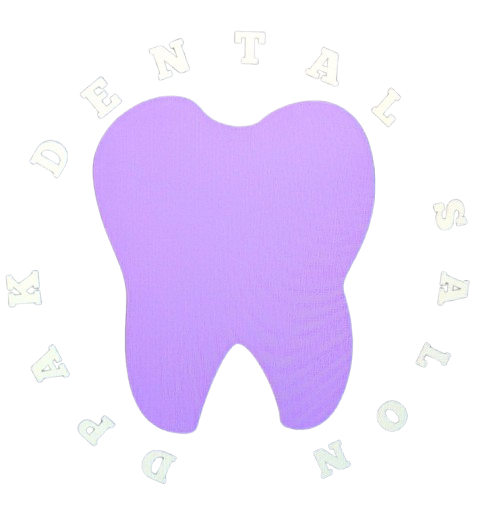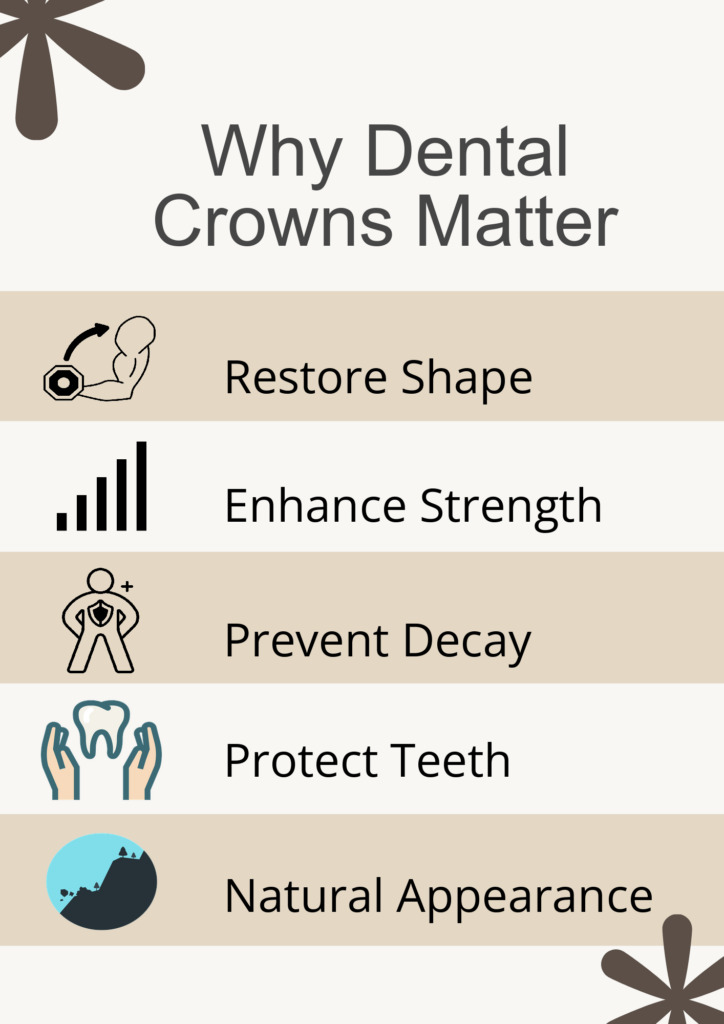Understanding Dental Crowns: An Overview
Dental crowns are caps placed over teeth. Primarily, they restore a tooth’s shape, size, and strength. Think of them as a protective shield for your teeth. They help when teeth are damaged or decayed. Made to look like your original teeth, they blend naturally with your smile.
When Should You Consider a Dental Crown?
Several situations might lead to needing a dental crown:
– Tooth decay: When a cavity is too large for a filling
– Cracked or broken teeth: Provides a protective cover
– Improving appearance: Fix uneven or discolored teeth
Dental professionals might suggest crowns after diagnosing specific conditions. When a tooth is weakened by decay or fillings, a crown can offer the right support. It’s often the recommended fix for various dental issues.
The Benefits of Opting for Dental Crowns
Dental crowns offer many benefits:
– Oral health: Protect teeth from further decay or damage
– Functionality: Help in biting or chewing properly
– Aesthetic: Provide a natural and appealing look, enhancing your smile
With dental crowns, you not only protect your teeth but also improve how they work and look. They ensure you maintain natural tooth functions and enjoy a flawless smile.
Exploring Different Types of Dental Crowns
There are several types of dental crowns:
– Stainless steel: Ideal for temporary crowns, suitable for kids
– Acrylic: Lightweight and quick to make
– Gold: Durable and long-lasting
– Porcelain: Matches teeth color, very natural appearance
Each type has pros and cons. Stainless steel is budget-friendly but temporary. Gold is durable but noticeable. Porcelain looks natural but can be less durable than metal. Your choice depends on factors like budget, durability, and appearance.
Unraveling the Dental Crown Procedure
The dental crown procedure is straightforward:
1. Preparation: The dentist prepares the tooth by removing decay.
2. Impression: An impression of your tooth is taken for a perfect fit.
3. Temporary crown: You’ll get a temporary crown until the permanent one is ready.
4. Permanent fitting: The permanent crown is fitted and adjusted.
Addressing common fears, remember that local anesthesia makes the procedure painless. Dentists ensure comfort and preciseness, ensuring the crown fits well and feels natural.
Aftercare Tips for Dental Crowns: Maintenance and Longevity
Maintaining dental crowns is simple:
– Brush and floss regularly to keep them clean.
– Avoid biting hard foods, which can damage the crown.
– Visit your dentist regularly to check the crown’s condition.
Good oral hygiene and regular dental visits can significantly extend the life of your crown. Avoiding bad habits like chewing ice will help, too.
Considering Alternatives to Dental Crowns: Weighing Your Options
There are alternatives to dental crowns:
– Veneers: Thin covers for cosmetic improvements
– Inlays and onlays: For fixing damaged teeth
Veneers enhance appearance but do not offer the protection crowns do. Inlays and onlays are less invasive but don’t cover entire teeth. Weigh these options based on your needs.
Choosing the Right Dental Professional for Your Crowns
Selecting a good dentist is vital:
– Look for experience and relevant qualifications.
– Consider the dentist’s reputation among patients.
Trusting your dental crowns with a skilled professional ensures you get the best results with cherished care and precision. Always choose a dentist who listens and provides tailored advice.

